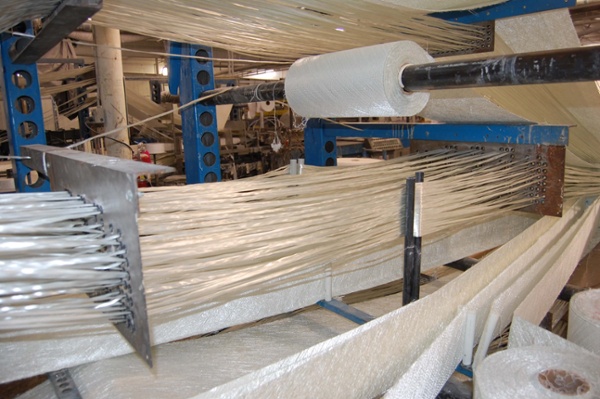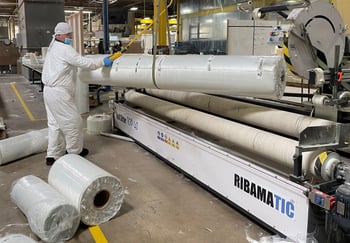
Some industry professionals use the terms “fiberglass” and “fiber-reinforced polymer (FRP)” interchangeably. However, there is technically a difference as the two can refer to distinct products. Below, we highlight what fiberglass and FRP are and how they differ.
What Is Fiberglass?
.jpg?width=208&name=glass%20fabric%20(002).jpg) Fiberglass is a material that is made by melting spinning glass. The process produces glass fibers, which can be used by themselves or combined with other materials for use in various applications. In the latter case, the glass fibers are utilized as a reinforcement material. The glass fiber provides the dominating mechanical properties to make the base material, which can be a liquid polymer, metal, or ceramic, into a stronger composite material.
Fiberglass is a material that is made by melting spinning glass. The process produces glass fibers, which can be used by themselves or combined with other materials for use in various applications. In the latter case, the glass fibers are utilized as a reinforcement material. The glass fiber provides the dominating mechanical properties to make the base material, which can be a liquid polymer, metal, or ceramic, into a stronger composite material.
Fiberglass-reinforced composites are sometimes referred to simply as “fiberglass” since fiberglass is present in all of them regardless of the base material. In composite materials, the glass fibers are available in many forms that facilitate manufacturing including yarns, rovings, mats and textile-style fabrics.
What Is FRP?
 Fiber-reinforced polymer (FRP) is a material that is produced by combining a polymer base material with a fiber reinforcement material. The fibers provide structure and stability to the polymer matrix. The polymer matrix support the fibers allowing it to perform correctly. It also protects the fiber from environmental conditions such as salt, moisture and UV radiation.
Fiber-reinforced polymer (FRP) is a material that is produced by combining a polymer base material with a fiber reinforcement material. The fibers provide structure and stability to the polymer matrix. The polymer matrix support the fibers allowing it to perform correctly. It also protects the fiber from environmental conditions such as salt, moisture and UV radiation.
The term “polymer” refers to chemical compounds made of long molecule chains. For structural composites, this is a synthetic material (e.g., polyester, vinyl ester, epoxy). Generic words sometimes used for the polymer are resin and plastic. The fiber reinforcement can be a number of materials (e.g., glass fibers, carbon fibers, or graphite fibers). The exact polymer and fiber materials that are chosen influence the properties exhibited by the final composite material, which means manufacturers can tailor an FRP material to meet particular application requirements while minimizing cost and weight. For example, airplanes, high end recreation equipment, and the auto racing industry often utilize carbon or graphite as a reinforcement material due to the materials’ high stiffness. Fiberglass is the reinforcement of choice for most FRP products due to it having the best combination of properties and cost. Some companies and countries refer to glass fiber-reinforced polymers (GFRP) to provide the distinction with carbon reinforcements (CFRP.).
What’s the Difference Between Fiberglass and FRP?
Given the definitions provided above, we can conclude that fiberglass and FRP can be used interchangeably in most, but not all cases. When discussing a composite material, fiberglass means a glass fiber-reinforced polymer (FRP or GFRP.) A fiberglass composite that does not use polymer as the base material cannot be called an FRP composite. Similarly, an FRP composite that does not use glass fibers as the reinforcement material or polymer as the base material cannot be called a GFRP composite.
Learn More About FRP From the Experts at Creative Composites Group
Want additional information about fiberglass-reinforced polymer composites? Creative Composites Group is here to help! We provide FRP solutions for a wide range of industries and applications. As a result, our team has extensive knowledge about the material, including benefits, products, and applications. We can answer or address any questions or concerns you may have about it if you contact us today. Alternatively, download our eBook, “FRP: Benefits, Products, and Applications for Infrastructure.”
